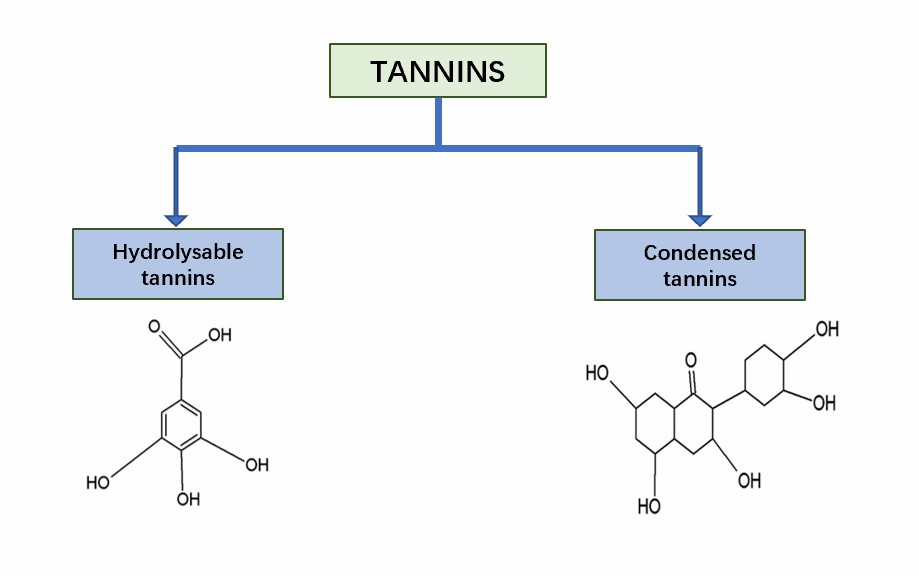Control of Plant Nematodes by Tannins
Tannins are a heterogeneous group of polyphenolic compounds. They are usually divided into two subgroups, the hydrolyzable and the condensed tannins. Hydrolyzable tannins possess a polyol core to which galloyl groups are esterified, while condensed tannins are oligomers of two or more flavan-3-ols. Both types show an enormous diversity in the degree of polymerization, monomer composition, and in decoration with other phenolic compounds. A handful of studies have also found a correlation between tannin accumulation and nematode resistance.
Lifeasible, as a leading global company, is committed to helping our customers achieve effective and successful research. We provide analysis services for controlling nematodes by tannins, including hydrolyzable and the condensed tannins. We always deliver reliable results and reports on time to our customers worldwide.
Analysis of the Condensed Tannins
- The condensed tannins are oligomers and polymers of polyhydroxyflavan-3-ol monomer units. The polymers are polydisperse, and the chains are irregular, sometimes branched, and often contain more than one type of configurational base unit.
- Condensed tannins are relatively unstable in aqueous solution and disproportionate in mild acids or bases. Condensed tannins complex strongly with metal ions, carbohydrates, and proteins.
 Fig.1 Types of tannins and their basic structures.
Fig.1 Types of tannins and their basic structures.
- Lifeasible provides analysis services of the condensed tannins against plant nematodes, including detection of accumulation of the condensed tannins and their main precursors flavan-3,4-diols, the correlation between nematode growth and tannins, expression of related gene expression about tannins and others.
- In addition, we also provide an analysis of the mechanism of effects of the condensed tannins on nematodes.
Analysis of the Hydrolysable Tannins
- The hydrolysable tannin family perhaps is the most fascinating group of tannins since they show both structural simplicity and complexity within both monomeric and oligomeric forms.
- Structurally, perhaps the most complex group of tannins are the hydrolysable tannins (HTs). HTs are first divided into three subclasses such as simple gallic acid derivatives, gallotannins (GTs), and ellagitannins (ETs).
- Lifeasible provides analysis services of the hydrolysable tannins against plant nematodes, such as the effect of different concentrations and compositions on nematode growth. In addition, we also provide an analysis of the mechanism of negative effects of the condensed tannins on nematodes, such as inducing protein precipitation to deprive nematodes of nutrient uptake.
Lifeasible is always devoted to providing high-quality and satisfactory service to our customers. We provide our clients with direct access to our experts as well as promptly respond to their inquiries. If you are interested in our services or have any questions, please feel free to contact us or make an online inquiry.
For research or industrial raw materials, not for personal medical use!
 Fig.1 Types of tannins and their basic structures.
Fig.1 Types of tannins and their basic structures.